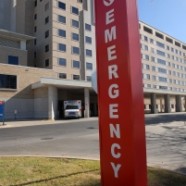
As a psychotherapist, who is also a resident of Colorado Springs, Colorado, the nationally covered Waldo Canyon Fire that has claimed land, property (approximately 350 homes destroyed), and human life (2 deaths to date) has me thinking about the nature of traumatic experiences. Whether life threatening (as for many Pikes Peak region residents), or emotionally disturbing, I am reminded that “any event that has…a lasting negative effect on the self…is by its very nature ‘traumatic'” (Shapiro, 2001). Dr. Francine Shapiro, developer of the trauma theory/therapy known as EMDR (Eye Movement Desensitization & Reprocessing) writes: “The information stored in the neuro network may be manifested by all elements of the event: images, physical sensations, tastes and smells, sounds, affect, and such cognitions as assessment and belief statements. When the unresolved trauma is stimulated, the client not only sees what occurred but may also reexperience the affect and physical sensations that were felt at the time” (p. 43).
The day after the most dramatic and deadly escalation of the fire, I was asked by the Humane Society of the Pikes Peak Region to meet with employees caring for the influx of demands, donations and displaced animals. “Trauma”–both directly and vicariously experienced–was the obvious and palpable topic of conversation. Employees told of knowing people whose homes had burned. Some in the group were evacuees, while others were housing evacuees. Everyone was impacted by the devastation in some way. After an hour of sharing, I expressed concern for the residual effects we’re apt to see and/or experience in the months to come.
To paraphrase my remarks, I observed how the nervous system is activated/mobilized to either overcome a perceived or actual threat (“Fight”), or move away from the threat (“Flight”); that is, to discharge the mobilization of fight-or-flight energy in the body. When we can’t do either–or, choose not to–the mobilization of energy does not merely disappear, but remains in the tissues, tendons, and muscles of the body as a “freezing” or “immobilization” response – waiting to resurface as physiological arousal, intrusive thoughts, and/or avoidance, or compulsive, behaviors; the basic criteria for post-traumatic stress. I concluded my remarks by challenging each employee to put words to their feelings (one of the most basic forms of trauma discharge), as well as to seek professional help if needed. To do otherwise might mean that the flames of the Waldo Canyon Fire will continue to burn long after they’ve been extinguished. It is the nature of unprocessed traumatic experiences to do so.

